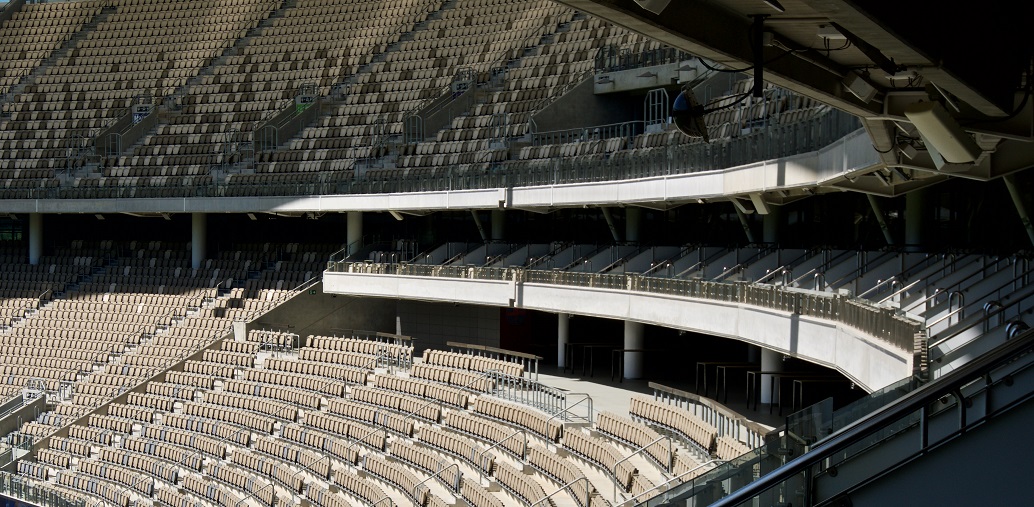
Many of the disasters and near misses in sporting history were the result of overcrowding or sports ground managers’ ignorance of how many people may be safely accommodated.
A safe capacity depends not merely on the available viewing accommodation but on the entrances and exits capacities and on the physical condition of the stadium, as well as safety management of the spectator facilities. Therefore, the safe capacity of a seated area may on occasions be lower than the number of seats within it.
Compliance
The calculation of the safe capacity of a venue must be an integral component of the safety certificate or licence, where in place. Compliance with the safe capacity should be a major part of any inspection regime. Where there isn’t a certification system in place, the process for calculating the safe capacity is valid.
- Entry capacity: The number of spectators who can pass through all the entry points or turnstiles serving the stadium, or a section of the stadium, within a period of one hour
- Holding capacity: The number of spectators that can be safely accommodated in the viewing accommodation of the stadium, or in a section of the stadium. In the case of seats, this will be determined by the actual number of seats, less any that cannot be used safely owing to seriously restricted views or their inadequate condition. For a standing area, this will be determined by several factors, including crush barrier strengths and layouts, seriously restricted views, and an assessment of the physical infrastructure and safety management factors.
- Exit capacity: The number of spectators that can safely exit from the stadium, or from a section of the stadium, under normal conditions.
- Emergency exit capacity: The number of people – spectators and all other people present – that can safely negotiate the emergency exit
Having calculated all the above figures, the final capacity of a sports ground, or a section of a sports ground, will be determined by whichever is the lowest figure of the above four factors.
If the final capacity for the sports ground is set at lower than the level management would desire, it can only be raised after the necessary remedial works have been completed, or the quality of safety management has improved. The area in question will then need to be re-assessed.
Calculations are not always a straightforward task, especially given wide variations in the age, design and infrastructure of stadia. Detailed guidance on this task is provided by the SGSA's Guide to Safety at Sports Grounds, commonly referred to as the Green Guide.
This guide also reinforces the need for the calculation to be determined by a person competent to undertake the task, and stresses the need for the outcome to be verified by an independent body, as part of a wider safety inspection of the sports ground, and by the authority designated with issuing a sports ground safety certificate.
Sport without spectators
The COVID-19 pandemic has led to the resumption of live elite sport without spectators. Events that are held without the presence of spectators within designated sports grounds must still be within the boundaries of the Safety of Sports Grounds Act 1975. A General Safety Certificate will therefore be in scope, which will, notwithstanding that the event will not be viewed by spectators, still contain requirements over all areas for which ground management has direct or indirect control. This could encompass offices or players’ facilities within a stand, media facilities, club or leisure facilities, satellite buildings as well as ingress and egress to and from car parks.
A key consideration is whether the terms and conditions contained within the certificate are scalable, or otherwise able to be amended, to reflect the lower numbers of people within the stadium in line with the no spectators requirement. This would be particularly applicable to the areas now marked out for stewards and medical teams which were originally set in the certificate for viewing spectators.
Consequently, the General Safety Certificate will need to reflect the differing conditions of use of the sports ground as well as additional conditions to place a requirement upon the certificate holder to comply with government and sport governing bodies protocols in relation to COVID-19 biosecurity.
As the COVID-19 restrictions ease, there will be moves towards the re-admittance of spectators. The SGSA is working closely with the government and sport governing bodies to ensure this is achieved in a safe and secure way.
“Events that are held without the presence of spectators within designated sports grounds must still be within the boundaries of the Safety of Sports Grounds Act 1975”
